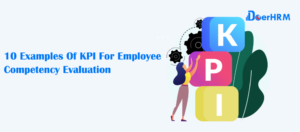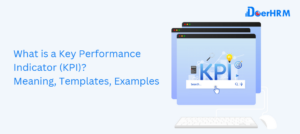If you’re on a sales or marketing team, there’s something that always rules discussions at the end of a quarter: KPIs. Whether you’re in a mad rush to achieve those final pesky goals or beginning to dive into next quarter’s KPIs, it’s a constant topic within the world of sales and marketing.
For new sales or marketing team members, KPIs can be a bit confusing. What actually matters? Which data points should I truly care about? Even the most seasoned sales and marketing teams can sometimes get lost in the creation of KPIs.
Here’s a breakdown of 8 important key performance indicators (KPIs) your sales and marketing team should be keeping track of each quarter.
What is KPI in Sales and Marketing?
Key Performance Indicators, or KPIs, are simply the metrics your business tracks in order to help determine the overall relative effectiveness of your business’s marketing and sales efforts.
The great thing about KPIs is that you can configure them to suit the needs of your business and your individual teams. By analyzing these indicators, you can determine what strategies are working and which ones aren’t, and adjust your efforts accordingly. Consider incorporating the following KPIs into your business’s efforts today:
1. Cost per Lead (CPL)
Cost per lead, or CPL, allows you to measure the cost-effectiveness of your marketing campaigns at generating new sales leads. It designates a dollar amount to each lead your campaign generates. This is particularly effective for analyzing effectiveness of online advertising options such as AdWords or social ads. A successful CPL will be low for individuals (leads) with a large overall number of viable leads.
2. Marketing Qualified Leads (MQLs)
A marketing qualified lead simply refers to a lead that is ready to be given to your sales department for outreach. By identifying what a qualified lead looks like for your business—whether through form submissions, website behaviors, or some other action—you can track the steps that lead to the contact’s readiness for sales, extracting the effective points in the marketing and sales pipeline.
4. Customer Retention
Customer retention measures your business’s effectiveness in retaining customers over the long term. The adage states that engaging new customers costs more than engaging current customers; therefore, you’ll want to focus on this key performance indicator to help sharpen your business’s reputation, customer service process, and overall customer experience. At what stages of the pre- and post-sales process are you losing repeat business? Where can you improve your efforts?
3. Cost per Customer Acquisition
Cost per Customer Acquisition takes into consideration the costs of each step involved in convincing a potential customer to close the sale. In addition to the costs of the product itself, cost per customer acquisition includes the costs involved in the less visible back-of-house stages such as research and marketing. By knowing how much each new customer is costing you in making that conversion, you can determine what routes are the most efficient for your business and budget. Comparing cost per customer acquisition is a good way to identify your business’s product priorities.
5. Marketing ROI
Return on investment, or ROI, allows you to measure how much revenue is being generated by a specific marketing campaign, as compared to the costs of running the campaign. ROI may be considered the most important indicator to monitor and assess.
To track this KPI, you take the number of leads your campaign is generating, divided by the opportunity value, or your average value-per-win divided by your average lead-to-win ratio. While ROI is a valuable and essential KPI for your marketing, it does pose some difficulties; it may not always be possible to determine a direct return in certain situations, such as when a lead views an ad without clicking, then visits your site at a later time.
6. Sales Qualified Leads (SQLs)
The sales qualified leads metric provides you with a look at the number of potential customers who become sales opportunities. By knowing how many leads your team is converting to sales, you can determine the strengths and weaknesses of your lead generation and sales pipeline processes. It’s a great indicator of your sales team’s effectiveness with their current resources; with this data you can help your sales team to reach its full potential.
7. Opportunity-to-Win Ratio
This ratio provides you with an easy to comprehend value to determine your rate of success in converting qualified leads into closed sales. With this information, you can turn to your sales team: who in your team is great at creating opportunities, but not as strong at closing sales? Who can close a sale to nearly anyone, but might not count initial contact as one of their strengths? This is valuable data you can use to help train your sales team in the specific areas they made need most, on both an individual and collective level.
8. Sales Revenue
This is a simple KPI that allows you to measure the progress of your business in generating sales revenue. With several points of data, you can determine your business’s growth trends and projections. It’s valuable on both a top-level view, as you are tracking your business’s overall success, as well as on an individual basis, as you can apply it to your team members to develop personalized goals. This is a great way to continue boosting your company’s growth and, by extension, its revenue.
Conclusion
By tracking the right KPIs, you can get a better pulse on the health of your business. When you identify KPIs that align with your sales and marketing tactics, you’re able to easily see the ROI created by these two teams.
Having gained valuable insights from our current article, click the following link to explore ‘5 KPIs Every Sales Manager Must Measure And Track‘ for further in-depth knowledge.”





